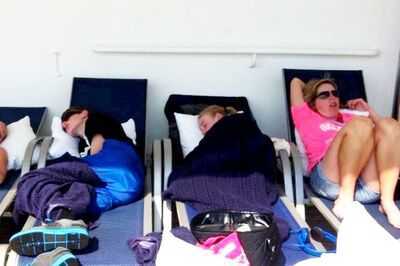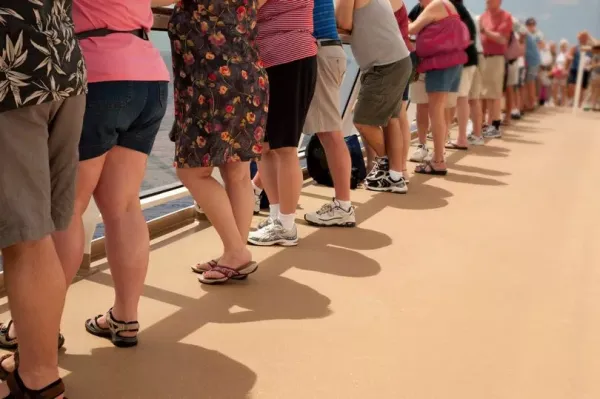
Netflix’s new documentary Trainwreck: The Poop Cruise has caused quite the commotion, leaving many curious about the inner workings of mega cruises. One travel expert has the answers, sharing insider secrets of life below deck. Global Work & Travel ’s Jessie Chambers shares five of the most surprising secrets from the cruise world, including onboard jails and morgues.
She also unpackscommon codes blasted over the PA system. According to Chambers, most cruise ships have a brig which is essentially a “secure jail-like room” to detain unruly or dangerous passengers. The brig houses these passengers until they can be removed at the next port.
READ MORE: Seven destinations sick of tourists as another city bans cruise ships

Cruise ships also have a place to house deceased passengers. Given that some cruises have an older average passenger age, it isn’t altogether uncommon for deaths to occur onboard. For this reason, most cruise liners are equipped with morgues that can hold multiple bodies until the ship reaches land.
In rare cases, families can potentially request burials at sea – a practice that still exists under strict regulation. According to Chambers, some passengers even pre-plan their final voyage, ashesincluded.
When it comes to the code system used by staff, Chambers explains that these are used to signal emergencies. Cruise staff are trained to use discreet codes (i.e. “Code Oscar” or “Code Alpha”) to flag medical incidents, man overboard alerts, or even biohazardevents like mass vomiting.
Chambers’ last insider secret is that not all ports will welcome all passengers, even if they have paid already. She says that if your cruise ship has a health issue onboard or if weather turns, your port stop can be cancelled.
If this happens, passengers can be left with no recourse or compensation. She says this has happened frequently in the post-COVID era.
Despite some of the less glamorous aspects and potential dangers, Chambers says cruises are still a great way to travel. “Cruises are brilliant fun – but they’re also floating cities, and that means everything from crime to chaos has to be accounted for.

“The Trainwreck: Poop Cruise documentary might seem extreme, but outbreaks, delays, even onboard arrests are all part of the behind-the-scenes reality. It’s important travellers know what they’re signing up for – not to scare them, but to empower them,” she concludes.
That said, there are some passengers of the infamous cruise that argue that the documentary “doesn’t even scratch the surface” of how horrific the experience was.
The cruise voyage from Texas to Mexico descended into chaos after an engine room fire caused a massive electrical failure, leaving over 4,000 passengers and crew to wade through urine and feces and camp on deck.
Tay Redford, 24, a passenger who was only 12 at the time of the incident, says she felt "hurt" by the portrayal after watching the trailer. Tay vividly recalls the fear and chaos, arguing that Carnival failed to provide meaningful support after the ordeal.
"I've only seen the trailer, but from what I saw, it doesn't even scratch the surface," she said. "It's just Carnivalworkers telling the story. It's really hard watching the documentary come out and seeing all these people making money from it.